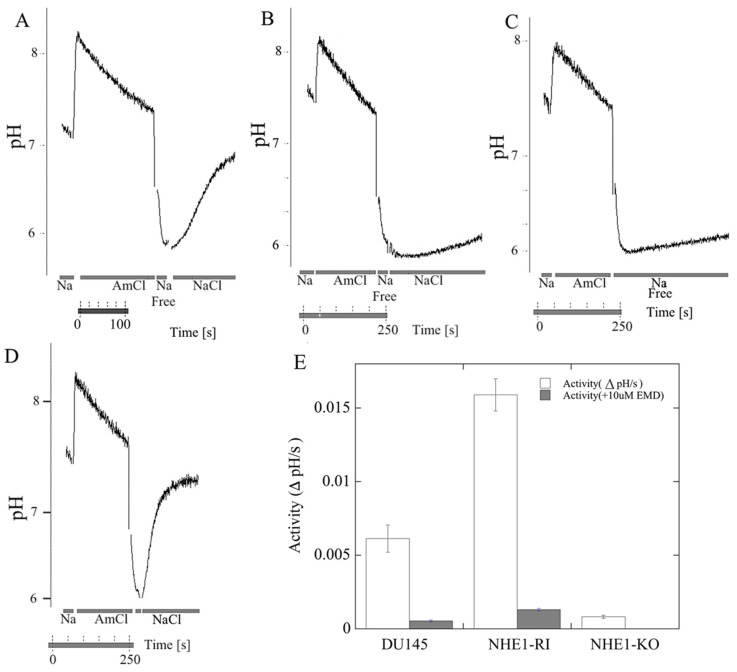Figure 2.
Na+/H+ exchanger activity in parental DU 145 cells, in NHE1-knockout cells (NHE1-KO), and in knockout cells that had NHE1 reintroduced (NHE1-RI). (A–D) Examples of traces of activity; these illustrate recovery from an acutely induced acid load. The intracellular pH was recorded in cells transiently acidified using ammonium chloride addition. Periods when NH4Cl, NaCl, and Na-free solution were added are indicated. (A) wild-type DU 145cells; (B) KO cells; (C) wild-type cells recovered from acid load in the absence of Na+; (D) RI: KO cells with NHE1 reintroduced (knock-in). (E) Bar graph showing a summary of the initial rate of recovery; this was measured relative to the wild-type protein and recorded as delta pH/s. n ≥ 6, mean +/− SE. A pH-sensitive indicator dye, BCECF, was used to measure changes in pHi after the acute acid load induced by the addition and withdrawal of ammonium chloride. The activity of NHE1 was calculated from the changes over the first 20 s of recovery from the acid load, and was expressed as ΔpH/s. Where indicated in (E), 10 µM EMD87580 (EMD) was included in the recoveries to confirm that activity was from Na+/H+ exchanger activity.

